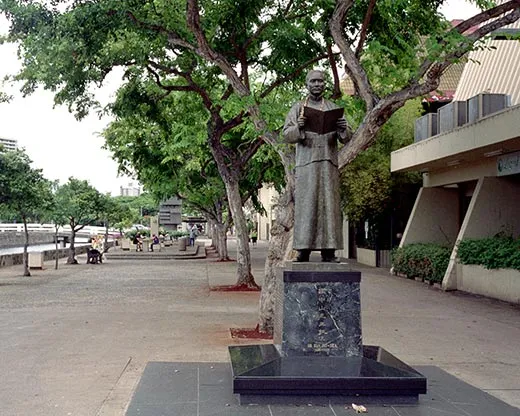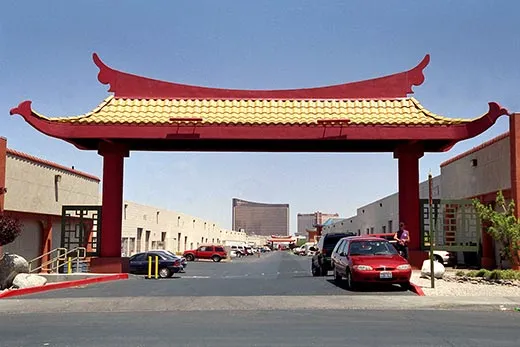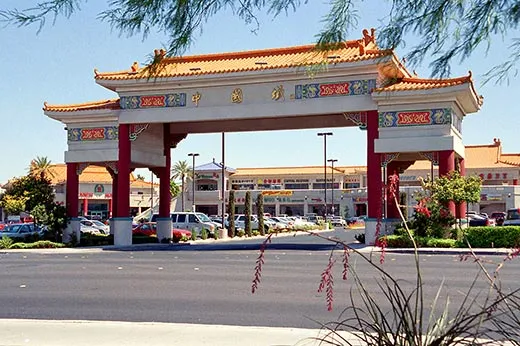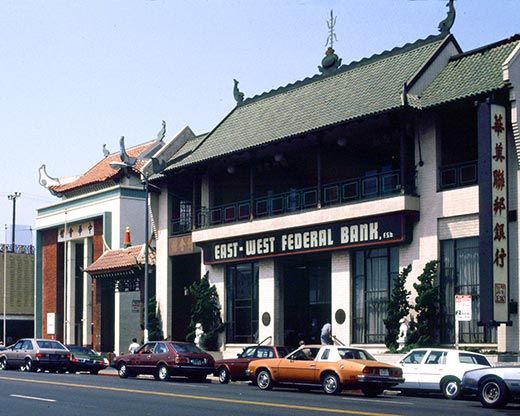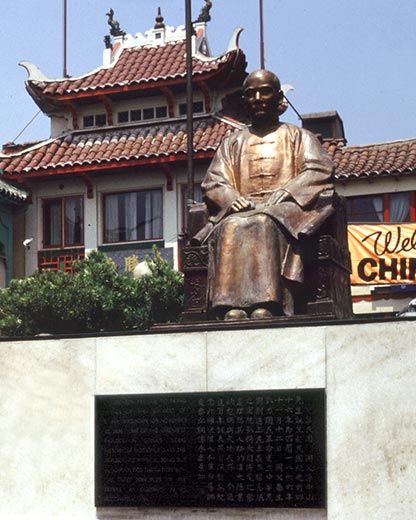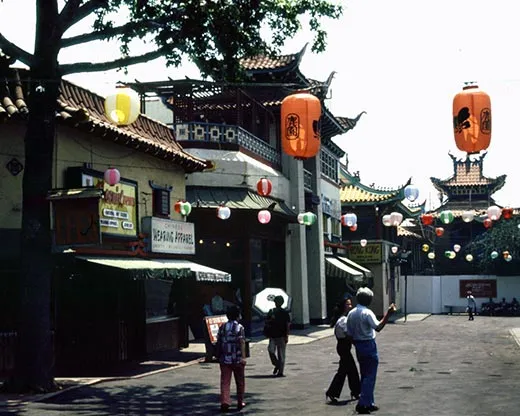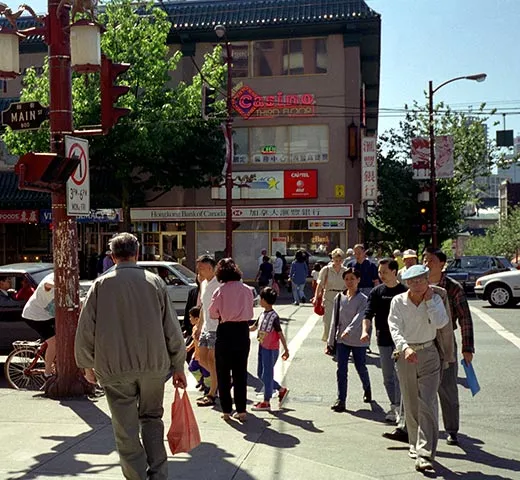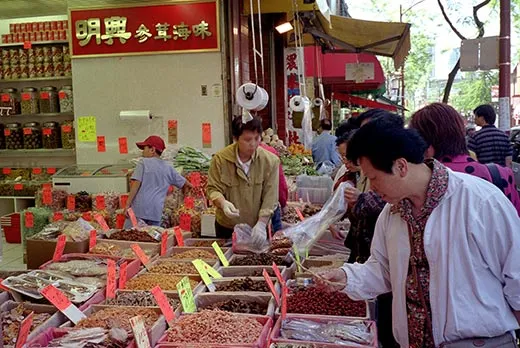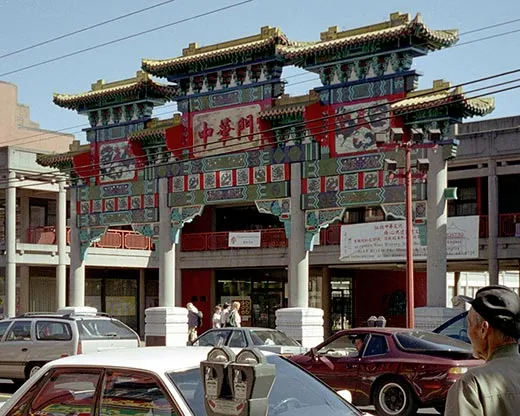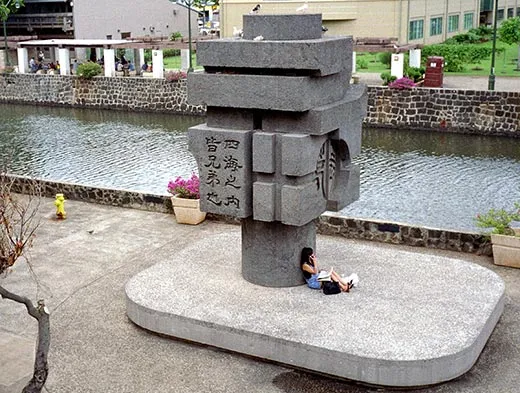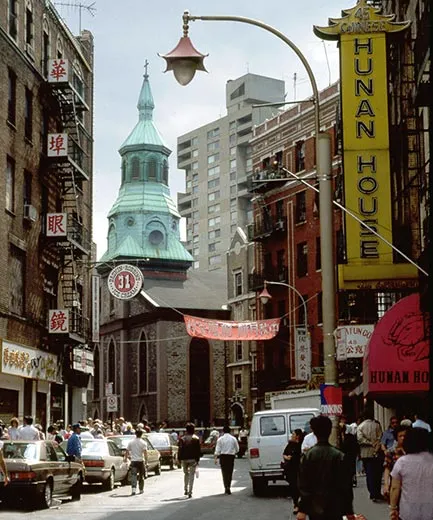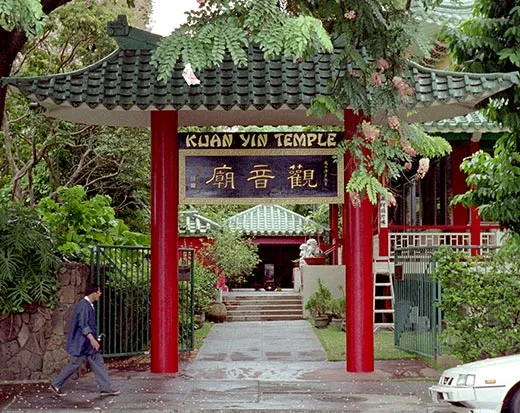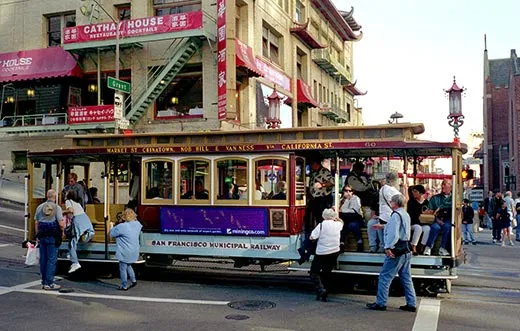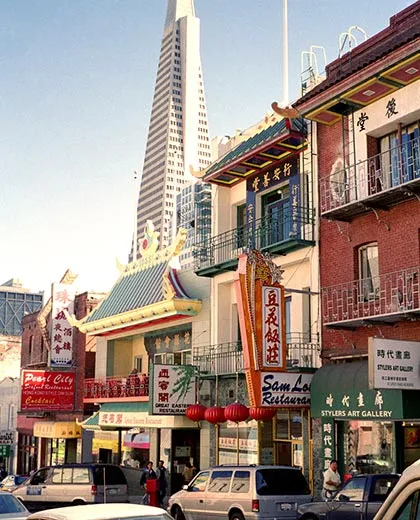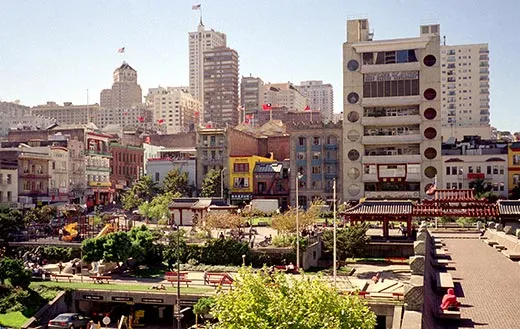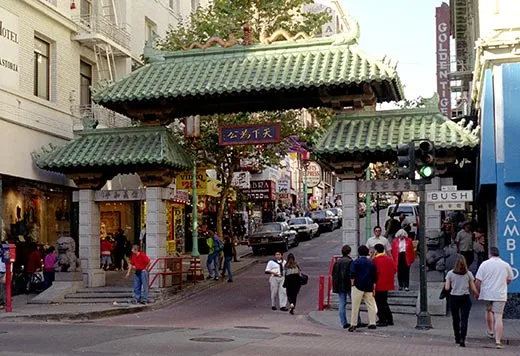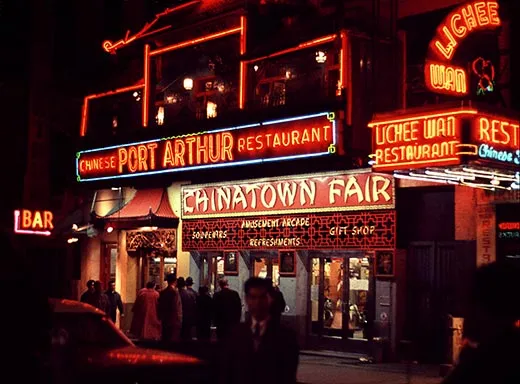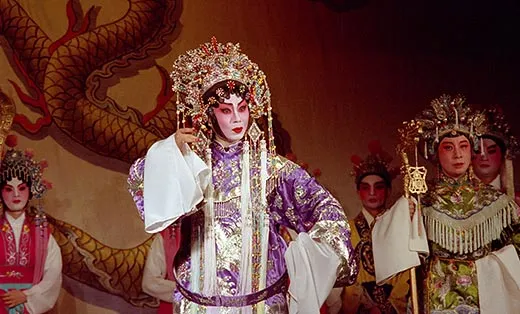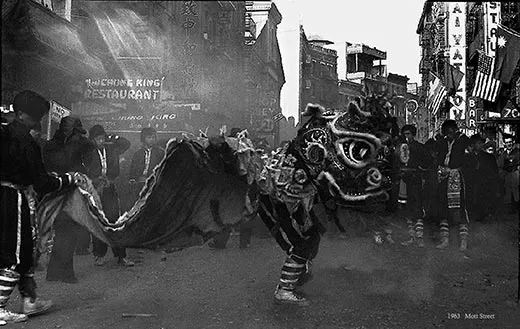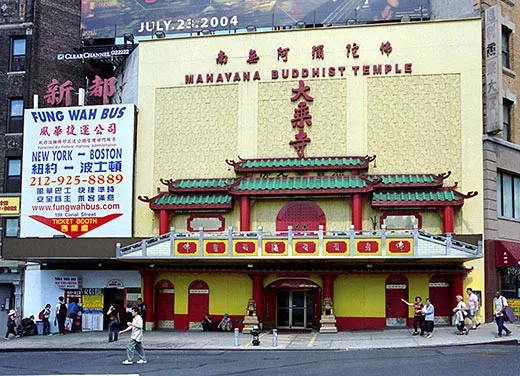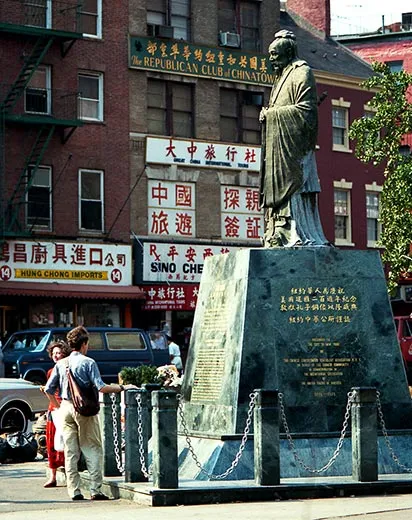The Legends Behind the Dragon Boat Festival
Celebrated on the fifth day of the fifth month of the Chinese calendar, Duanwu Jie honors storied history with culinary treats
/https://tf-cmsv2-smithsonianmag-media.s3.amazonaws.com/filer/Dragon-Boat-Festival-631.jpg)
There are many competing explanations for Duanwu Jie, the Dragon Boat Festival, which falls on the fifth day of the fifth month of the Chinese lunar calendar—this year, May 28. All involve some combination of dragons, spirits, loyalty, honor and food—some of the most important traditions in Chinese culture. The festival’s main elements—now popular the world over—are racing long, narrow wooden boats decorated with dragons and eating sticky-rice balls wrapped in bamboo leaves, called zongzi in Mandarin, and jung in Cantonese.
“Usually Chinese festivals are explained by the traumatic death of some great paragon of virtue,” says Andrew Chittick, a professor of East Asian Humanities at Eckerd College in Florida.
And so the story goes with Qu Yuan, an advisor in the court of Chu during the Warring States period of ancient China who was exiled by the emperor for perceived disloyalty. Qu Yuan had proposed a strategic alliance with the state of Qi in order to fend off the threatening state of Qin, but the emperor didn’t buy it and sent Qu Yuan off to the wilderness. Unfortunately, Qu Yuan was right about the threat presented by the Qin, which soon captured and imprisoned the Chu emperor. The next Chu king surrendered the state to their rivals. Upon hearing the tragic news, Qu Yuan in 278 B.C. drowned himself in the Miluo River in Hunan Province.
In the first origin story of zongzi, told during the early Han dynasty, Qu Yuan became a water spirit after his death. “You can think of it as a ghost, a spirit energy that has to be appeased. There are a variety of ways one might appease a ghost but the best and most enduring is to give it food,” explains Chittick.
For years after Qu Yuan’s death, his supporters threw rice in the water to feed his spirit, but the food, it was said, was always intercepted by a water dragon. (Master Chef Martin Yan, author and host of the pioneering Yan Can Cook TV show, suggests there may have been truth to this: “Some fresh water fish—like catfish—grow so huge that the Chinese considered them dragons.”) After a couple of centuries of this frustration, Qu Yuan came back to tell the people to wrap the rice in leaves, or stuff it into a bamboo stalk, so the dragon couldn’t eat it. It was only generations later that people began to retroactively credit Qu Yuan’s erstwhile lifesavers with starting the rice-ball-tossing tradition.
To make sense of how the water dragon gets into the story, or indeed of the boats carved with dragons on them, we need to go back further in time—more than 6,000 years ago, the earliest dated figure of a dragon found within the boundaries of modern China. “One of the most important mythical creatures in Chinese mythology, the dragon is the controller of the rain, the river, the sea, and all other kinds of water; symbol of divine power and energy…. In the imperial era it was identified as the symbol of imperial power,” writes Deming An, Ph.D., a professor of folklore at the Institute of Literature, Chinese Academy of Social Sciences, in Beijing, and co-author of Handbook of Chinese Mythology. “In people’s imaginations, dragons usually live in water and are the controllers of rain.”
Dragon boat racing is ascribed to organized celebrations of Qu Yuan beginning in the 5th or 6th century A.D. But scholars say the boats were first used hundreds of years earlier, perhaps for varied reasons. On the lunar calendar, May is the summer solstice period, the crucial time when rice seedlings were transplanted. At the same time, says An, “according to Chinese traditional belief, the date figured with double ‘5’ is extremely unlucky.” To ensure a good harvest, southern Chinese would have asked the dragons to watch over their crops, says Jessica Anderson Turner, a Handbook of Chinese Mythology contributor who holds a Ph.D. in folklore from the Indiana University. They would have decorated their boats with ornate dragon carvings, “and the rowing was symbolic of the planting of the rice back in the water,” Anderson Turner explains. This jibes with Yan’s explanation of the symbolism behind the shape of zongzi: tetrahedral. “The points are intended to resemble the horn of a cow,” Yan says, “which was a sacred symbol in the ancient agrarian culture for blessings and abundant crops.”
In another interpretation, Chittick argues that the dragon boat races were “initially a military exercise” in the Hubei area, home of the state of Chu, which took place during the solstice because that’s when the river was highest. “Small boats were an important part of warfare. Then they turned it into a spectator sport.”
These disparate histories and stories blended over time into the encompassing myth of Qu Yuan, seemingly without issue to the celebrators. “The combining of stories is how people make sense of things,” says Anderson Turner. “Myths are always changing to fit the needs of the community. For a lot of people, you can have both history and culture; both can be authentic and true.”
Even the Qu Yuan story isn’t the only legend behind the celebration of Duanwu Jie. Some northern Chinese, Chittick explains, told the tale of a man who fled to the woods after being wronged by his lord. Trying to flush the man out, the lord burned down the forest and accidentally killed the loyal servant. Another competing myth, from what is now the southern province of Fujian, is that of Wu Zixu, who was also wronged by his king—and later by the king to whom he had defected. Wu Zixu’s story involves revenge, triumphant battles, the whipping of his old foe’s corpse, and suicide. As a final act, he asked that, once dead, his head be removed and placed on the city gate so he could watch the invaders take over his betrayers. The body of Wu Zixu was tossed in the river and his fury is said to create raging tides, and so he is worshipped as a river god in parts of China—which is why some connect him with the Dragon Boat Festival.
But Qu Yuan became the face of Duanwu Jie, because he was a prolific polemical poet whose work was studied and loved by generations of Chinese scholars who followed him. “One reason Qu Yuan wins the drowning war is that his story was written in historical texts—over and over,” says Anderson Turner. Having demonstrated both love for his country and contempt for the ungracious ruling class, he is known as the People’s Poet. For the Chinese, Qu Yuan has transcended the simple story of his self-sacrifice, coming to represent the very embodiment of patriotism.
Likewise, both the Dragon Boat races and zongzi have become much bigger than just the holiday. In many places, if you head to a waterway on the weekend of May 28, you’ll find the intricately decorated boats manned by two rows of paddlers egged on by loud drummers. But if you miss the festival, there are other chances: the International Dragon Boat Federation is the umbrella group for rowing clubs all over the world who compete year-round; they’ll hold this year’s world championships in August in Prague.
As part of the festival, zongzi has become just as ubiquitous as the dragon boats, thanks to the great Chinese diaspora. Today you can get the sticky rice balls anywhere there’s a Chinese population, Yan says: year-round in convenience stores in New York’s Chinatown, as bite-size delicacies in tea houses in Hong Kong, as an on-the-go snack for tourists in Cambodia, wrapped in a pandan leaf in Malaysia.
Does the omnipresence of these traditions dissipate the power of a myth that has been celebrated annually for 1500 years? As the evolution of Qu Yuan’s story proves, traditions change. The strongest ones endure despite alterations. Back in the day, Anderson Turner notes, rowers who fell out of the dragon boats were left to fend for themselves or drown because their fate was seen as the will of the dragon deities. “I haven’t talked to any contemporary dragon boat racers and asked why they do save people who fall out now,” she says. “But I’d bet they could reconcile doing so with keeping to the spirit of the story.”
